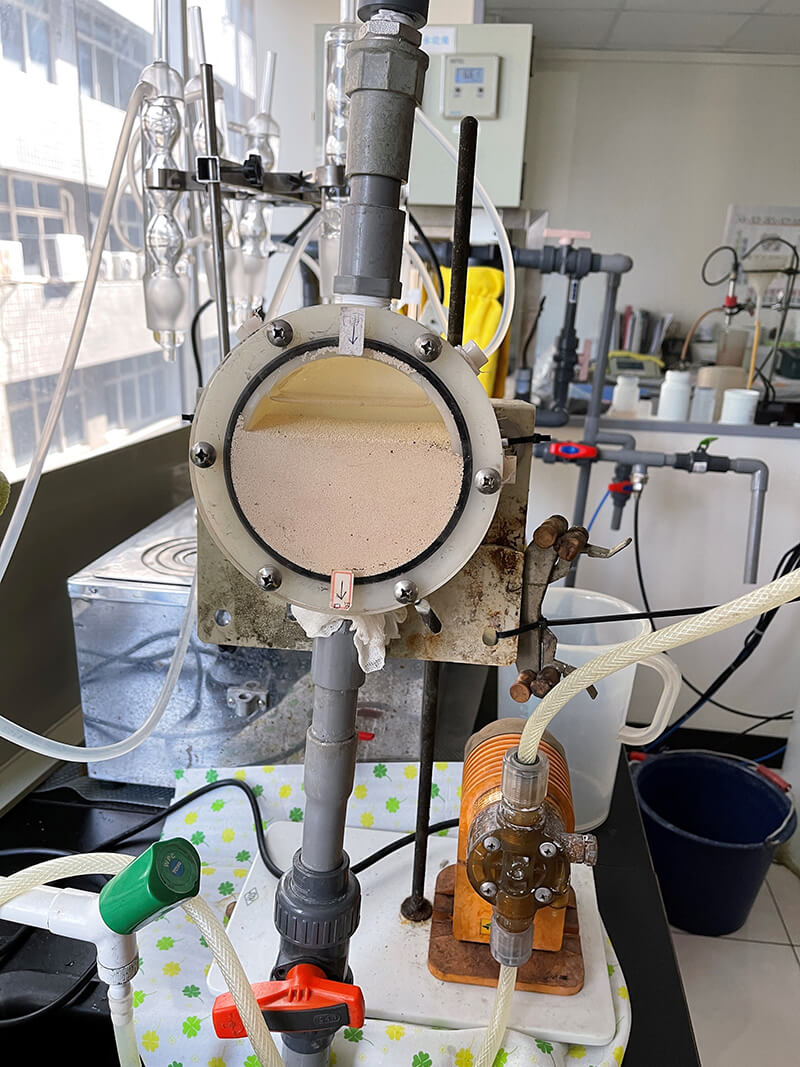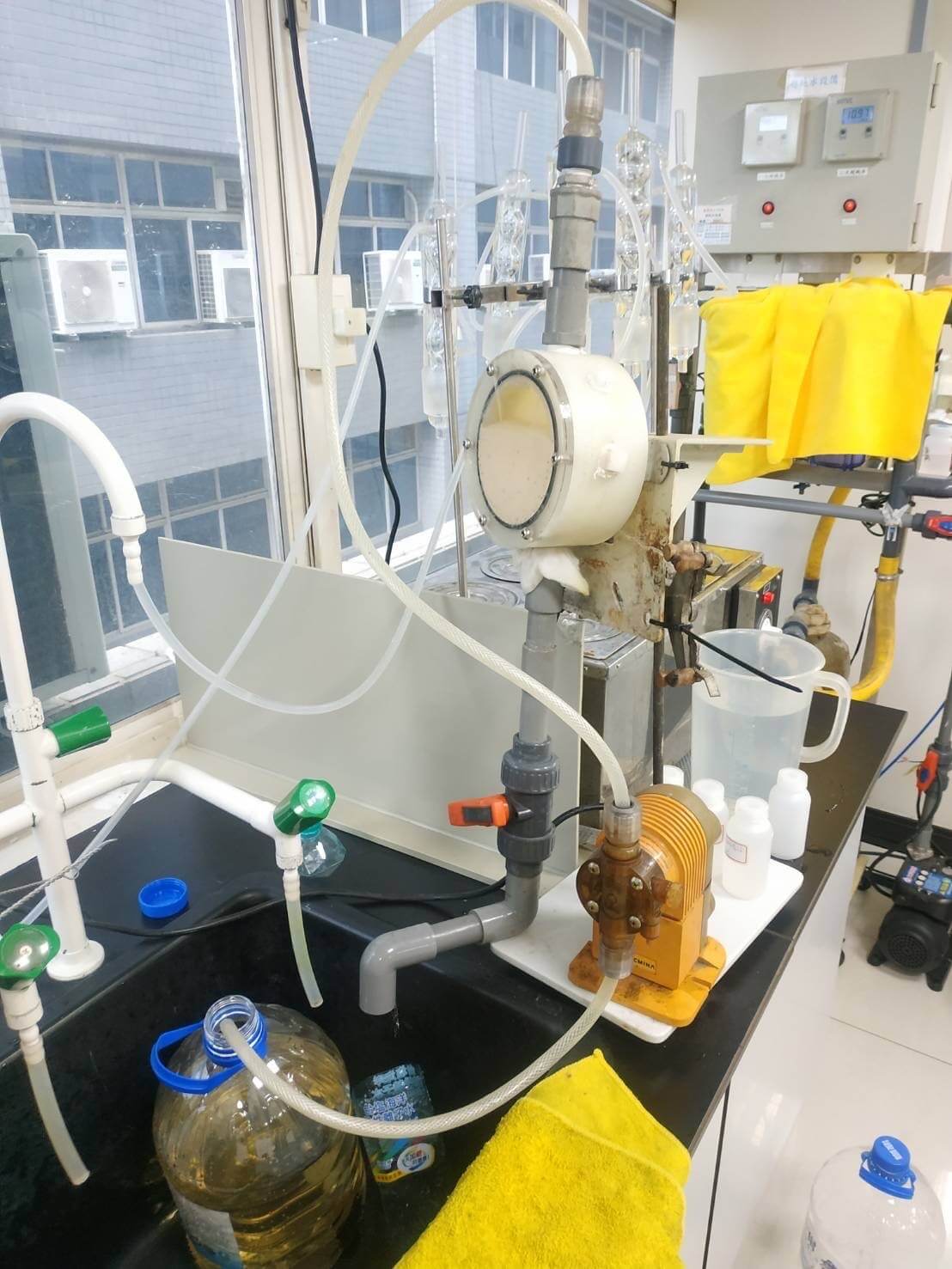Generation of Fluoride Pollution
Generation of Fluoride Pollution
Fluoride hazards are environmental pollutions caused by fluorine and its compounds. They mainly come from emissions during aluminum smelting, phosphate rock processing, phosphate fertilizer production, steel smelting, and coal combustion. Hydrogen fluoride and silicon tetrafluoride are the main gaseous pollutants.
Fluoride-containing wastewater from industries such as electroplating and metal processing, as well as the washing water from treating fluoride-containing waste gas by the washing method, are mainly liquid pollutants. After discharge, they will cause water pollution. However, the settlement of fluoride-containing soot or its leaching by precipitation will contaminate the soil and groundwater.
Main Environmental Hazards Caused by Fluoride
Fluoride is an accumulative toxic substance. Plant leaves and forage can absorb fluoride. When livestock such as cattle and sheep eat feed contaminated by fluoride, they will have swollen joints, elongated hooves, osteoporosis, and may even be unable to stand up. When humans ingest excessive fluoride through drinking water and food, it will interfere with various activities in the body, disrupt the calcium and phosphorus metabolic balance, and cause symptoms such as fragile teeth, dental fluorosis, and deformed bones and joints, which is called skeletal fluorosis.
The daily fluoride requirement per person is 1.0 - 1.5 mg, of which 65% comes from drinking water and 35% comes from food. If the fluoride content in drinking water is greater than 1.0 mg/L, the prevalence of dental fluorosis increases with the increase in fluoride content; if it is above 4.0 mg/L, skeletal fluorosis will occur.
The discharge standard of fluoride in China's Water Pollution Prevention and Control Law is 15.0 mg/L. The maximum allowable amount in the drinking water quality standard is 0.8 mg/L of fluoride ions. According to the national industrial wastewater discharge standard, the fluoride ion concentration should be less than 10 mg/L; for drinking water, the fluoride ion concentration requirement is below 1 mg/L.
There are many methods for treating fluoride-containing wastewater in China. At present, the most commonly used in engineering are:
1. Chemical precipitation, 2. Flocculation precipitation, 3. Adsorption, these three treatment processes.
Chemical Precipitation Method
For high-concentration fluoride-containing industrial wastewater, the calcium salt precipitation method is generally used. That is, lime is added to the wastewater to make fluoride ions react with calcium ions to form CaF₂ precipitate and be removed. This process has the advantages of simple method, convenient treatment, and low cost. However, it has the disadvantages that it is difficult for the treated effluent to meet the standards, the sludge settles slowly, and dehydration is difficult.
The solubility of calcium fluoride in water at 18°C is 16.3 mg/L, which is 7.9 mg/L in terms of fluoride ions. Calcium fluoride at this solubility will form a precipitate. When the residual fluoride content is 10 - 20 mg/L, the speed of forming a precipitate will slow down. When there are certain amounts of salts in the water, such as sodium chloride, sodium sulfate, and ammonium chloride, the solubility of calcium fluoride will increase. Therefore, the fluoride content in the wastewater treated with lime generally will not be lower than 20 - 30 mg/L.
Lime is inexpensive, but its solubility is low and it can only be added as an emulsion. Since the produced CaF₂ precipitate coats the surface of Ca(OH)₂ particles, it cannot be fully utilized, so the dosage is large. The amount of sludge discharged will also increase accordingly. When using the lime precipitation method to treat fluoride-containing wastewater, we cannot simply increase the excess amount of lime to improve the fluoride removal effect. Instead, we should consider the coordination between the fluoride removal efficiency and economy, so that it has a better fluoride removal effect and minimizes the amount of lime added as much as possible. This is also beneficial to reducing the amount of sludge discharged after treatment.
Flocculation Precipitation Method
The commonly used flocculant for the flocculation precipitation method of fluoride ion wastewater is aluminum salt. After adding aluminum salt to water, the complexation of Al³⁺ and F⁻, as well as the ligand exchange, physical adsorption, and sweeping effects of the intermediate and final products of aluminum salt hydrolysis on fluoride ions, are used to remove fluoride ions from water. Compared with the calcium salt precipitation method, the aluminum salt flocculation precipitation method has the advantages of less chemical dosage, large treatment capacity, and the treated water can reach the national discharge standard after one treatment. Aluminum salts such as aluminum sulfate and polyaluminum have good coagulation and removal effects on fluoride ions.
When using aluminum salt, the optimal pH for coagulation is 6.4 - 7.2, but the dosage is large. Depending on different situations, 150 - 1000 g of aluminum salt needs to be added per cubic meter of water. This will make the effluent contain a certain amount of dissolved aluminum that is harmful to human health. After using polyaluminum, the dosage can be reduced by about half, and the pH range for flocculation precipitation is expanded to 5 - 8. The fluoride removal effect of polyaluminum is related to the properties of polyaluminum itself. The polyaluminum with an alkalinity of 75% has the best fluoride removal effect, and the optimal dosage is when the molar ratio of F to Al in water is about 0.7. The aluminum salt flocculation precipitation method also has obvious disadvantages, that is, the application range is small. If the fluoride content is large, the amount of coagulant used is large, the treatment cost is high, and the amount of sludge generated is large; the fluoride ion removal effect is greatly affected by operating factors such as stirring conditions and sedimentation time, as well as anions such as SO₄²⁻ and Cl⁻ in water. The effluent quality is not stable enough. This is related to the fact that our understanding of the mechanism of coagulation for fluoride removal is still insufficient. Studying the mechanism of flocculation for fluoride removal has obvious practical significance.
Adsorption Method
The commonly used adsorbents for fluoride removal mainly include activated alumina, clinoptilolite, and activated magnesium oxide. In recent years, hydroxyapatite and zirconium oxide with relatively high fluoride adsorption capacity have also been reported. Using these adsorbents, wastewater with a fluoride concentration of 10 mg/L can be treated to below 1 mg/L, meeting the drinking water standard. The adsorption method generally loads the adsorbent into a packed column and uses a dynamic adsorption method, which is simple to operate and has a stable fluoride removal effect.
Although these new adsorbents are relatively expensive, the adsorption capacity decreases slowly after treatment and can be reused. This is the current development direction of fluoride removal from wastewater.
Comparison of Several Fluoride Removal Technologies
1) The chemical precipitation method can be used to treat high-concentration fluoride-containing wastewater. When the initial fluoride ion concentration is 1000 - 3000 mg/L, the final concentration after treatment by the lime method can reach 20 - 30 mg/L. This method is simple to operate and has a low treatment cost. However, due to the slow sedimentation speed of the sludge, calcium chloride or other flocculants need to be added to accelerate the precipitation. Finding ways to increase the calcium ion concentration and maintain a high pH to make calcium fluoride settle is the main way to reduce the fluoride ion concentration. In addition, the combined use of phosphates, magnesium salts, aluminum salts, etc. has a better fluoride removal effect than using only calcium salts.
(2) The flocculation precipitation method has a poor fluoride removal effect for high-concentration fluoride-containing water, and the sulfate ion concentration in the treated water is relatively high.
(3) Most of the adsorbents in the adsorption method play an anion exchange role, so the fluoride removal effect is very obvious. However, special treatment agents and specific equipment need to be added, and the initial treatment cost is often higher than that of the precipitation method. But it can be reused. In the long-term evaluation of sludge treatment volume and continuous treatment cost, the adsorption method is still more suitable.
Kaiguang Fluoride Removal Catalyst Particle Test
Test Operating Conditions:
Amount of catalyst particles: 300 ml
Double-dose regeneration: 120 g of AlCl₃ is prepared into a 1000 cc solution
Treatment flow rate: 28 cc/min
So the total flow rate is about 6 BV (30 cc/min = 1800 cc/hr = 6 times the resin volume)
Fluoride content in the original wastewater: 15.9 ppm


Water Quality Inspection and Tracking Analysis: (Fluoride content after treatment in ppm)
| Date | January 17 | January 18 | January 20 | January 25 | February 8 | February 10 | February 14 | February 21 |
|---|---|---|---|---|---|---|---|---|
| 13:00 | 0.07 | 0.48 | 0.31 | 0.46 | 0.48 | 0.52 | 0.57 | 0.78 |
| 14:00 | 0.17 | 0.47 | 0.26 | 0.5 | 0.53 | 0.59 | 0.59 | 0.82 |
| 15:00 | 0.45 | 0.29 | 0.28 | 0.34 | 0.59 | 0.66 | 0.61 | 0.81 |
| 16:00 | 0.47 | 0.44 | 0.28 | 0.46 | 0.54 | 0.65 | 0.65 | 1 |
| 17:00 | 0.48 | 0.4 | 0.35 | 0.27 | 0.53 | 0.8 | 0.79 | 1.21 |
A total of 90 liters of wastewater was used until the fluoride content reached 1 ppm, and it was ready for regeneration. From the above experiment, it can be seen that the treatment effect of the catalyst adsorption particles is good, and the fluoride content has been evenly reduced from 15.9 ppm to 0.5 ppm.
For high-concentration fluoride-containing wastewater, two-step treatment is often required. First, lime is used for precipitation to reduce the fluoride content to 20 - 30 mg/L, and then an adsorbent is used to reduce the fluoride content to below 1 mg/L.
Considering that there are significant differences in the types, quantities, fluoride content, and other pollutants of fluoride-containing wastewater, when choosing a treatment method, it is necessary to adapt to local conditions according to the actual situation. Especially pay attention to the comprehensive treatment of using waste to treat waste. During the treatment of fluoride-containing water, various fluoride removal methods may occur simultaneously. To achieve the best balance between economic benefits and environmental protection, the technicians of Kaiguang Company will evaluate based on the plant system conditions and water quality conditions, conduct experimental analysis, and give the most appropriate recommended method.
